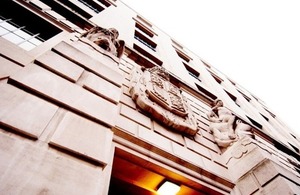PM backs European Supergrid plan
Plans to explore linking up green energy projects in the North, Baltic and Irish Seas were backed by Prime Minister David Cameron today as part…

Plans to explore linking up green energy projects in the North, Baltic and Irish Seas were backed by Prime Minister David Cameron today as part of the UK-Baltic-Nordic Summit held in London.
The Prime Minister announced that Energy Ministers will work together through the North Seas Offshore Grid Initiative and share experience with Ministers in the Baltic Energy Market Interconnection Plan (BEMIP) to ensure planning, market, regulatory and technical challenges are properly addressed and the right framework created for industry to invest in future projects.
An electricity supergrid could take green electricity produced in one country to another through thousands of kilometres of sub-sea cables. Wind farms built out at sea could also be connected to a number of countries.
Energy Secretary The Rt Hon Chris Huhne MP said:
“Europe’s future lies in green energy and Britain wants to work with other countries to make the most of the clean energy potential in and around the North Sea.
“Today we’re stepping up our efforts with our European partners to develop a North Sea electricity supergrid that will help secure our energy supplies in a low carbon way.”
And commenting, on today’s announcement by Siemens selecting Associated British Ports as its preferred bidder for a UK wind turbine factory at the Port of Hull, Mr Huhne said:
“The race for offshore wind manufacturing jobs is on, and Siemens and the Humber are first out of the traps. I’m determined the UK economy benefits from the opportunities and jobs of the offshore wind supply chain.”
The plans could help Europe meet its ambitious green energy targets and help Europe’s energy security, by balancing some of the challenges of using wind energy, including intermittency and the inability to store electricity.
For example, surplus wind energy produced off Britain’s coast (when electricity demand in the UK is low, but wind speed is high) could be exported to Norway and used to pump water in its hydro-electric power stations. Electricity produced by hydropower could then be sent to Britain at times of high demand when the wind is not blowing.
Key figures
- The North Sea covers a surface area of about 760,000 km².
- Over 100 GW of offshore wind projects are already in various stages of planning in the EU, which could produce 10% of the EU’s electricity (EWEA figures).
- The UK is rated number 1 in the world for its attractiveness for the offshore wind industry (Renewable Energy Country Attractiveness Indices, Ernst and Young, November 2010).
- The Crown Estate has awarded development rights for up to 32GW of new offshore wind generation under Round 3 of its leasing programme, in addition to existing plans and extensions of Round 1 and 2 (8.4GW). A further 6GW of exclusivity agreements are in place for projects in Scottish territorial waters.
Latest offshore wind statistics, released today by the European Wind Energy Association (EWEA), confirm that the United Kingdom is the European and world sector leader with 1,341 megawatts (MW) of installed capacity. The UK is followed by Denmark (854MW), the Netherlands (249MW), Belgium (195MW) and Sweden (164MW). Germany, Ireland, Finland and Norway have a further 145MW between them.
Notes for editors
- The UK is working with nine other European countries as part of the North Seas Offshore Grid Initiative, following an agreement signed in December 2010. These countries include the UK, Ireland, Sweden, Denmark, Germany, the Netherlands, Luxembourg, France, Norway and Belgium.
- A progress report on work towards an offshore grid will be presented to the North Seas Offshore Grid Initiative (NSOGI) Ministers in June of this year, ahead of a joint meeting that will be held between NSOGI and BEMIP countries later in the year. The output of this meeting will be reported to the ten NSOGI Ministers in December.
- The Baltic Energy Market Interconnection Plan includes Denmark, Estonia, Finland, Germany, Latvia, Lithuania, Poland, Sweden and Norway (as an observer).
- Read the EWEA report
- Read the latest offshore wind statistics published by the EWEA
- The UK Nordic Baltic Summit, which meets in London today, brings together prime ministers, policy innovators, entrepreneurs and business leaders from the UK, Sweden, Denmark, Finland, Norway, Iceland, Estonia, Latvia and Lithuania to discuss the challenges facing modern northern European economies, including how best to foster economic growth, job creation, and wellbeing in the current economic climate.